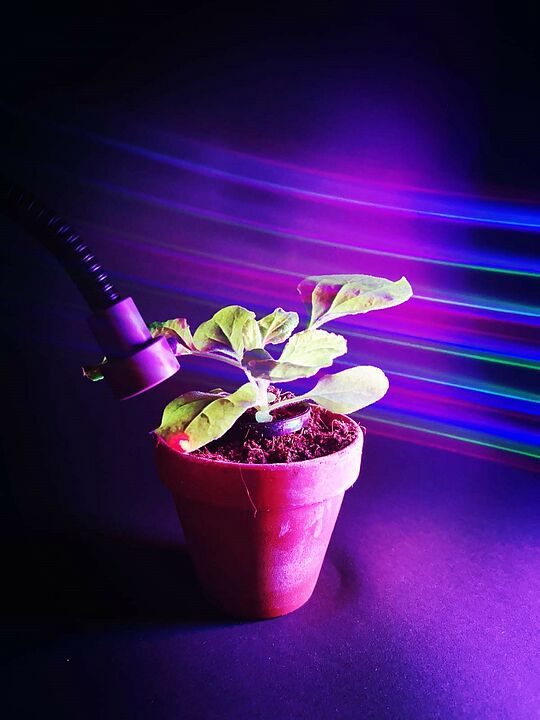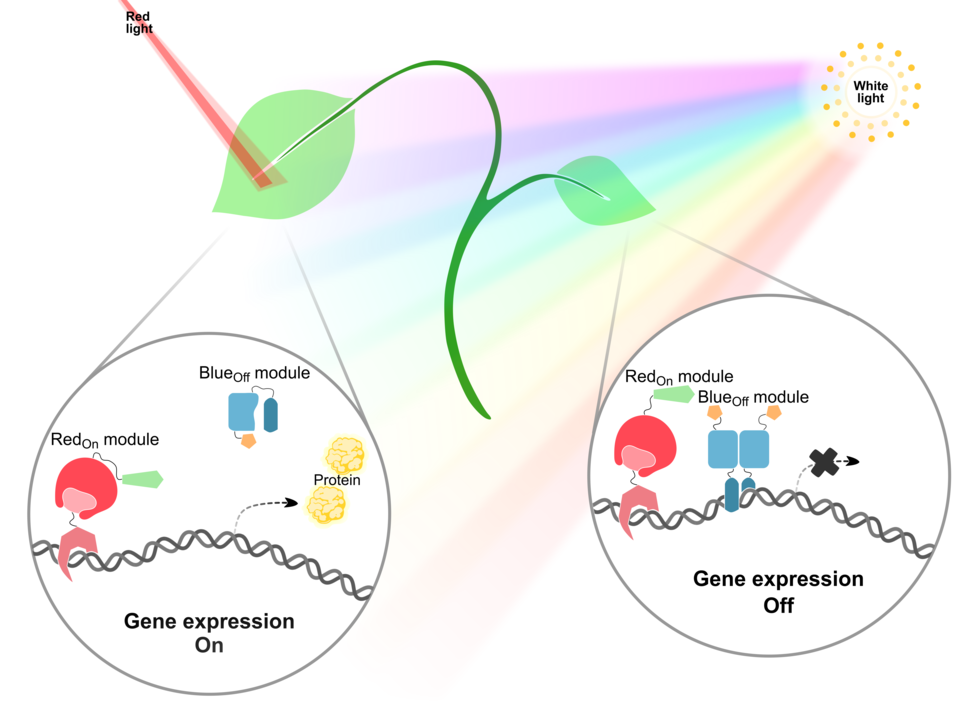Optogenetics offers a very powerful research toolset for biology. It can be used to control cellular events using light-responsive switches by activating specific sections of the genome in a targeted manner. For example, signalling and metabolic processes can be controlled through targeted activation using light.
Many optogenetic publications are focused on cells in mammalian, yeast and bacterial systems. Research from the area of plants is much less common. One of the reasons for this is a lack of suitable optical switches that can be used and switched in a targeted manner in plant cells, as the plants themselves require light to grow and the switches would therefore be constantly active.
A team working with HHU-CEPLAS researchers Prof. Dr. Matias Zurbriggen (Institute of Synthetic Biology) and Prof. Dr. Rüdiger Simon (Institute of Developmental Genetics) has now succeeded, in cooperation with colleagues from the University of Freiburg-CIBSS and the University of East Anglia-Norwich, to develop a customised optogenetic switch for plants. This tool, named ‘PULSE’ (Plant Usable Light-Switch Elements), is suitable for plants growing under normal day/night cycles. Targeted illumination with red light activates gene expression, while ambient white light is used to reverse the process.
To do this, PULSE has two optogenetic switches that respond to two different wavelengths. The monochromatic red light activates the switch, allowing a certain gene to be expressed at that precise moment. Blue light from daylight resets the switch, thus stopping gene expression. This process can be repeated any number of times.
Prof. Zurbriggen explained the significance of the development: “PULSE introduces the superior advantages of optogenetics into plants. The system is fully reversible, and achieves high dynamic ranges of expression and temporal resolution. The control of cellular processes with high spatiotemporal resolution is key to quantitatively understand the dynamics of biological signalling networks and for developing biotechnological applications.” The researchers in Düsseldorf first applied PULSE in one of biology’s model plants, thale cress (Arabidopsis thaliana). It was then possible to combine this tool with CRISPR/Cas9-based technologies. Finally, they were able to use tobacco plants (Nicotiana benthamiana) and thale cress to manipulate physiological responses in plants, for example their immune response.
Prof. Simon commented: “The optogenetic tool makes it possible to programme the expression of desired properties in a plant. We therefore think that PULSE and the conceivable expanded optogenetic toolset will facilitate in the future the targeted manipulation and study of biological processes in plants including development, growth, hormone signalling and stress responses.”
The work was carried out within the Cluster of Excellence on Plant Sciences (CEPLAS) research programme. The HHU team worked with researchers from the CIBSS Cluster of Excellence at the University of Freiburg led by Prof. Dr. Thomas Ott, Prof. Dr. Wilfried Weber and Prof. Dr. Jens Timmer and Ben Miller of the University of East Anglia.
Original publication
Rocio Ochoa-Fernandez, Nikolaj B. Abel, Franz-Georg Wieland, Jenia Schlegel, Leonie A. Koch, J. Benjamin Miller, Raphael Engesser, Giovanni Giuriani, Simon M. Brandl, Jens Timmer, Wilfried Weber, Thomas Ott, Rüdiger Simon, Matias D. Zurbriggen, Optogenetic control of gene expression in plants in the presence of ambient white light, Nature Methods (accepted 18 May 2020, published online 29 June 2020)
DOI: 10.1038/s41592-020-0868-y



